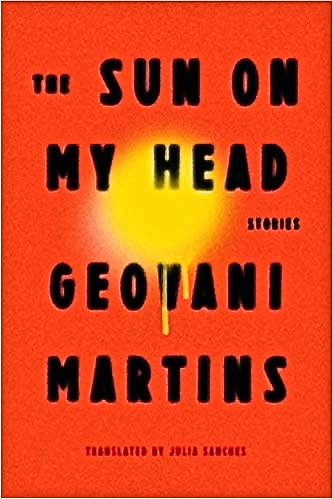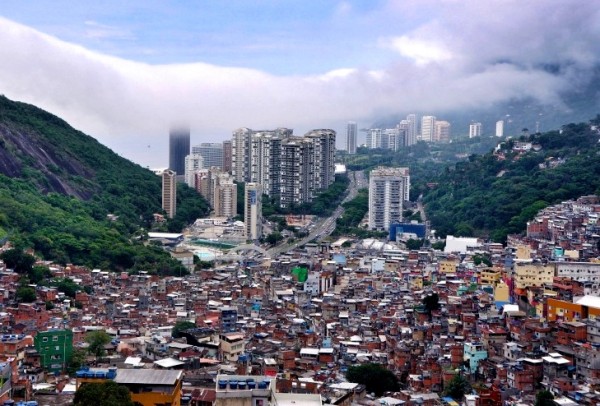“It’s rough walking out of those alleys, sharing the stairs with pipes upon pipes, stepping over open sewage drains, staring down rats, swerving your head to dodge electrical lines, and spotting your childhood friends carrying weapons of war only to be faced fifteen minutes later with a condominium with ornamental plants decorating its metal gates, and spying teenagers at their private tennis lessons. It’s all too close and too far.” – description of the South Zone favelas.
 With this collection of stories, the favelas of Rio de Janeiro have produced a young author of stunning talent and the ability to convey images and feelings about the overcrowded, poverty-filled neighborhoods which are homes to many young teens seeking some control over the neighborhoods in which they grow up. The teens, as we see in these stories, sometimes face death because they get mixed up with the “wrong” crowd, sometimes resort to theft and physical force to survive, and often become involved with guns simply because they are available. Some teens may have high hopes but find few legitimate outlets for their energy and creativity. Debut author Geovani Martins knows the Rio favelas well, having grown up and lived in them until the end of his teen years, but unlike most of the teens whose stories become the subjects of this collection, Martins was able to take advantage of a unique opportunity: he attended writing workshops at FLUP, the literary festival of the Rio favelas, which gave him a chance to channel his talents in surprising new directions – and he now has this powerful, new story collection to his credit.
With this collection of stories, the favelas of Rio de Janeiro have produced a young author of stunning talent and the ability to convey images and feelings about the overcrowded, poverty-filled neighborhoods which are homes to many young teens seeking some control over the neighborhoods in which they grow up. The teens, as we see in these stories, sometimes face death because they get mixed up with the “wrong” crowd, sometimes resort to theft and physical force to survive, and often become involved with guns simply because they are available. Some teens may have high hopes but find few legitimate outlets for their energy and creativity. Debut author Geovani Martins knows the Rio favelas well, having grown up and lived in them until the end of his teen years, but unlike most of the teens whose stories become the subjects of this collection, Martins was able to take advantage of a unique opportunity: he attended writing workshops at FLUP, the literary festival of the Rio favelas, which gave him a chance to channel his talents in surprising new directions – and he now has this powerful, new story collection to his credit.
Thirteen stories make up the collection, which is narrated primarily by young locals in the casual slang of people who are part of a particular group, sharing the same popular vocabulary and its cadences. Many congratulations are due to translator Julia Sanches for her role in converting it all into a comparable kind of “urban English,” as one critic labels it. The author takes full advantage of this style to set the mood and to place his speakers in a variety of contexts. The first story, “Lil Spin,” sets the tone as the main teenage character wakes up after a night out with his friends experimenting with all sorts of drugs and alcohol: “Woke up blowtorches blazing. For real, not even nine a.m. and my crib was like melting….Clear it was gonna be one of those days when you walking ‘round and the sky’s all fogged up, things shiftin’ about like you hallucinating.” Gradually the activity of the previous night unfolds, as does the background of the speaker, an episode involving his brother, references to his mother, and the tricks some friends played on a couple of show-offs on the beach. Then he remembers the cops “coming down hard”: “If you got no money for a bus ticket, you goin’ downtown, you got way more money than a bus ticket, you goin’ downtown, got no ID, you going’ downtown.” At which point the speaker ditches his flip flops and takes off down the beach.
The stories are not all sheer action and not all drug-related. The author provides needed sociological information in one early story, explaining that living in a favela in the South Zone is considered an advantage among favelas because that area is not uniformly poor. With a few residents of means living nearby and providing private schools and sports to serve their children, the overall level of teen violence is reduced. A poor teen speaker points out, however, that having some nearby residents who are not poor makes the contrast between the poorer residents of southern favelas and “the hill” more dramatic: “The border between the hill and the blacktop runs much deeper,” he explains. Now at an age in which he is able to walk home from school, the teen passes a private school and begins to notice that the students there “shook whenever my crew walked past.” Ironically, at his own school, these same students “spent our lives running from bigger, stronger kids who were braver and more violent.”
“Spiral” provides an example of a bright and curious teen from the South Zone caught between favela life and the better lives he sees among other nearby residents. On one occasion when the boy is waiting at a bus stop, an old woman, also waiting, becomes “obviously flustered” at being alone with him. When she starts to back off, he follows her to see what will happen, increasing his pace as she increases hers, until she rushes forward into a cafe. Feeling guilty and terribly lonely because he has been feared for no reason, he decides to make a real study of how humans relate to each other, and he finally chooses one person, a man with a wife and two young daughters, whom he decides to follows at a distance. Seriously observing the man’s life and orchestrating the times in which he himself is in proximity to the man, the teen is unobserved and never intrudes. For three months the man fails to recognize him from their many near-contacts, then suddenly and dramatically realizes he has been followed by the young person for weeks. When the man escapes into his apartment, the boy waits outside, then looks up to see his subject at the window aiming an automatic pistol at him. The teen’s conclusion is not surprising.
Other stories raise issues of father-son relationships, depict drug lords getting children between eight and ten years old to push drugs, and illustrate the competition between cops and cartels leading to murders which are never solved. Even graffiti as an addiction among some youth is a subject here:
“Tags are about eternity, about marking your passage through life…He felt he couldn’t go through this world unnoticed.” Themes of individual life vary. In “The Mystery of the Vila,” spiritual elements related to macumba prevail; “Padre Miguel Station,” creates an intensely personal story of drug use, how it feels, and how it impacts friends; “TGIF” considers a young man with high hopes but whose life seems to produce no results, except depression and an end to hopes. “The Crossing,” the last story about murder, is the most dramatic, and saddest, yet.
Author Martins’s stories are so full of dramatic energy that it is hard to imagine a reader not being caught up in them even when they are often harsh and violent, and though not all stories have a neat ending, no story here is wasted. Against what must have seemed like impossible odds in his teen years, Geovani Martins has done it. His youthful enthusiasm and perception, his personal experiences and observations, and his ability to convey the emotional toll of favela life have all resulted in a story collection which is staggering in its immediacy and raw insights.
Photos. The author’s photo appears on https://globoplay.globo.com/
Rio and its favelas are featured in this presentation by Maureen McCann: https://app.emaze.com/
The speaker of “Spiral” follows a man as he visits the Botanical Gardens with his wife and family. https://www.istockphoto.com
Arraial de Cabo beach, where a group of college students gets a surprise on the way home. https://www.123rf.com




